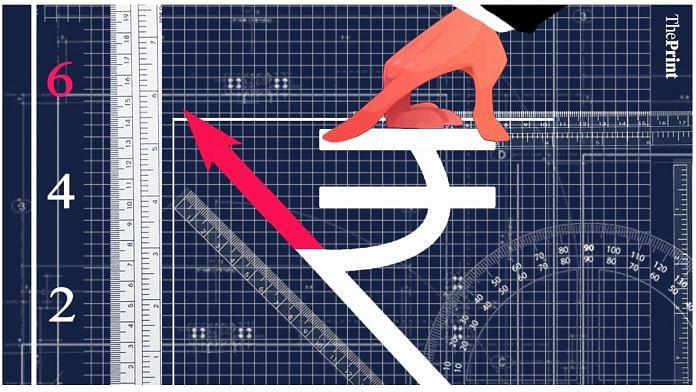The RBI’s Monetary Policy Committee voted to keep the policy rate unchanged as inflation continued to remain elevated and above the tolerance band of 2-6 per cent. The MPC has cut the policy rate by 115 basis points since the onset of the Covid-19 crisis, but has kept it on hold since May. Given the uncertain outlook on growth and inflation, this seems to be the most appropriate response.
The MPC might have been expected to respond to higher inflation by raising rates, but two factors have prevented this. First, the economic contraction caused by Covid and the lockdown means that demand is subdued. Second, supply side disruptions that are largely responsible for the higher inflation despite depressed demand cannot be addressed by higher rates.
The MPC also reiterated its October guidance that policy stance would remain accommodative as long as necessary during the current financial year and into the next financial year, to revive growth and mitigate the impact of Covid-19 on the economy. The continuation of accommodative stance implies that reviving growth continues to be the priority of the MPC. This also seems to be the appropriate strategy.
While the GDP numbers for the second quarter were better than expected, there are downside risks to growth. Changing the tone of the policy at this stage could have had an adverse impact on the recovery prospects.
Also read: RBI’s new MPC should focus on transmission. Without that, more rate cuts can be pointless
Faster-than-expected recovery
The GDP contracted by 7.5 per cent in the second quarter (July-September). The numbers showed that the economy in the second quarter recovered faster than what the RBI had projected in its October policy, -9.8 per cent. The pleasant surprise was positive growth in the manufacturing sector. The agriculture sector continued to perform well at 3.4 per cent, and its outlook remains bright due to better sowing of the Rabi crop.
Services remained in the contraction zone, the pace of contraction was contained as trade, hotels, transport, communication and services related to broadcasting clocked a lower than expected contraction at 15.6 per cent.
While the second quarter GDP numbers show that the economy is on a revival path, it needs to be seen if this revival can be durably sustained in the subsequent quarters.
One of the reasons for the better-than-expected GDP numbers was pent up demand and festival-linked stocking up. The positive growth in the manufacturing sector Gross Value Added is largely seen as an outcome of cost-cutting measures, and not due to increase in output. So, if the companies have managed to attain higher profits not by selling more but by laying off employees, it could act as a drag on demand in the subsequent quarters.
The early indications, as seen through the manufacturing sector purchasing managers’ index (PMI) and core sector growth, seem to suggest that recovery seen in growth is gradual. The outlook on growth is also clouded due to a resurgence of infections in some parts of the country.
On the demand side, all engines of growth showed a contraction. Private investment is slack and would continue to be muted so long as capacity utilisation does not recover. Exports and imports also shrunk but the decline in imports was more than the decline in exports, reflecting conditions of weak demand in the economy. A sharp resurgence of Covid-19 cases in advanced economies has the potential to weaken global growth and pose a drag on India’s exports.
Also read: Higher inflation doesn’t mean RBI’s Monetary Policy Committee should increase interest rates
Inflation remains a problem
While the recovery in growth seems to be nascent, the elevated inflation has constrained the ability of the MPC to support growth by cutting rates. In October, the Consumer Price Index inflation surged to 7.61 per cent. The MPC is of the view that inflation will remain elevated, barring a temporary relief in the winter months.
The surge in inflation is primarily attributed to supply-side disruptions, as reflected in the wedge between wholesale and retail inflation. While the bumper kharif arrivals could soften cereal prices, and vegetable prices could fall on account of seasonal factors, other food prices are expected to remain elevated. The volatility in crude oil prices also poses a risk to inflation. In the coming months, the MPC will also monitor the transmission of food inflation to core inflation.
The MPC has upgraded its forecast for growth. Real GDP is now expected to contract by 7.5 per cent as against the earlier forecast of a 9.5 per cent contraction. The MPC expects growth to turn positive in Q3 and Q4. Its optimism stems from the strengthening rural demand and recovery in urban demand. The forecast on inflation has also been revised upwards. Inflation is projected at 6.8 per cent for Q3.
The RBI and MPC face a complex policy trade-off. Unlike other countries that are grappling with the Covid-induced economic slowdown, India is facing high and persistent inflation. Much of the surge in inflation is driven by supply-side disruptions, high indirect taxes and excessive margins. Unless broad-based efforts are made to mitigate the supply-side-driven inflation, monetary policy cannot do much. The best option, as the MPC has rightly exercised, at this stage is to maintain status quo and wait for more clarity on growth and inflation outlook.
Ila Patnaik is an economist and a professor at National Institute of Public Finance and Policy.
Radhika Pandey is a consultant at NIPFP.
Views are personal.
Also read: Inflation targeting has worked for India, it is one of Modi govt’s defining achievements







Print needs more Ila Patnaiks, people with knowledge, dignity and a balanced views.
Media being business, probably people with inadequate knowledge, undignified language and biased views sell more.
It is an editorial prerogative but better quality viewership do need unbiased content with expression of contrary views in a dignified manner not with veiled attacks.